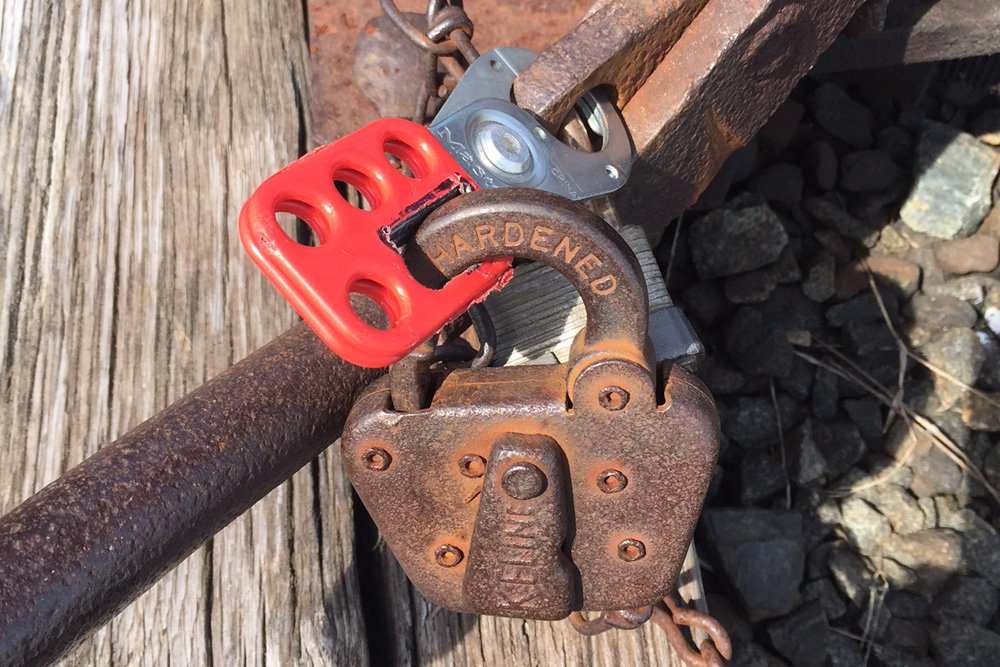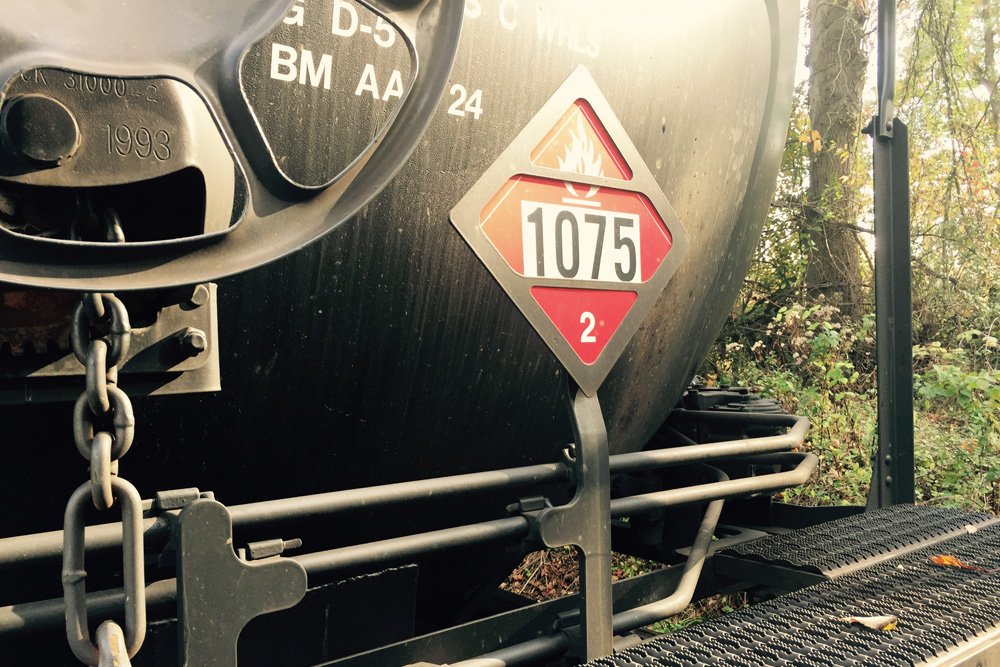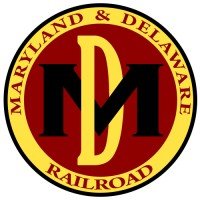
Safety at The Maryland & Delaware Railroad Company
Photo credit: Al Tillotson
Employees. Customers. Communities.
At The Maryland and Delaware Railroad Company, the safety of our employees, customers and communities is paramount.
We want our employees to come to work, perform their required job duties, and return home safely to their families and friends. We believe no job should ever be done unless it can be done safely, and our employees are continuously encouraged to evaluate our work processes and help refine them to lessen exposures.
We are a critical lifeline and service to our customers, and our commitment to safe practices and processes when working on or around their property is as strong as that of their own employees.
We want our trains to safely pass through the cities, towns and rural areas we serve as we quietly play our role in the daily harmony of those communities.
Culture of Safety, Culture of Cooperation
As ambassadors of railroad safety, we understand the improvement of safety is an ongoing process that involves constantly enhancing operating practices. Our management has decades of experience working with employees, customers, communities, as well as federal and state agencies in those regards.
MDDE is proud to be a frequent recipient of the American Short Line and Regional Railroad Association “Jake” Safety Award for having no reportable injuries.
Our goal: Zero accidents, zero injuries, ever.

Security
The Challenge
Spanning from rural America to the heart of our country’s largest cities, the task of keeping a railroad secure can be quite challenging. Beyond general trespassing, where people use the railroad as a walking path from place to place, vandalism to locomotives, freight cars, buildings, signal equipment, grade crossings and general theft of tools and materials are just some of the common threats to keeping a railroad safe and secure.
Security Training
Meeting all federal and state standards, our employees are provided comprehensive security training, which reviews general security guidelines, protection of sensitive information, property access and security, en route security and other potential security threats. In addition, MDDE has a continuous risk assessment process to determine and minimize exposures throughout our network.
Public Support
We are thankful for the support of the citizens of the states in which we operate, and for their reporting of problems on or along our railroad. The combined effort of those citizens, local and state law enforcement and our employees helps keep our network safe and secure.
Policy on Trespassing
Regarding trespassers, The Maryland and Delaware Railroad Company has a very strict “No Trespassing” policy for property owned or operated by our railroad, especially in switching yards, terminals and industrial areas. Trespassers increase the dangers for our employees, our customers and our communities. Those desiring access to property owned or operated by MDDE are encouraged to contact our Legal Department to obtain the proper Liability Release or Right of Entry Permit.

Maintaining the Railroad
Continuous Inspection
Railroad infrastructure is continually affected by weather and time, and as such, must be constantly inspected and improved. You’ll often see our specialized hi-rail pickups driving atop the rails as we perform routine track inspections, the schedule for which is determined by federal standards.
Continuous Improvement
Our maintenance cycles are the result of a system-wide, comprehensive evaluation of the most important maintenance needs. Such needs are driven by time and condition, as well as traffic levels, track speeds, topography, historical wear and tear, future operating plans, hazardous materials shipments, passenger operations and a host of other factors.
Improving our railroad physically makes it safer, more efficient, and more reliable.
In addition to investing in our own network, we work with federal, state and local agencies to administer grant funding that helps preserve our country’s transportation infrastructure, most of which was constructed in the 1800s and has been in continuous use ever since. One of the primary locations for these types of projects is at highway-rail grade crossings, where we partner to make the ride of the motoring public as smooth as possible, and their encounters with our trains as safe, and uneventful, as possible.
Beyond Rails and Ties
Does it seem like maintaining a railroad is all about rails and crossties? Other areas of our continuous railroad maintenance work include track line and surface corrections, turnout (track switch) inspection and repair, public and private grade crossing maintenance, highway-rail grade crossing line of sight maintenance for motorists, automatic grade crossing warning system maintenance and improvements, vegetation control, brush removal, ditching and drainage work, building maintenance and repairs, washout and disaster response, snow removal, as well as bridge inspection, bridge realignment and bridge repairs. It takes the successful performance of all of these types of work to keep a railroad operating smoothly, efficiently and safely.

Hazardous Materials
Common Carrier Obligation
Railroads have a “common carrier” obligation to carry hazardous materials. That means, unlike all other modes of transportation, railroads are required by the federal government to transport these materials, whether railroads want to or not.
A Safe History with Hazardous Materials
Per the Federal Railroad Administration:
“The production, transportation, and use of hazardous materials are essential to the economy of the United States, Canada, and Mexico, and to their technology-dependent societies. The increased harmonization of regulations, better data, and new technology, and cooperative efforts between shippers, carriers, tank car builders, and governments influence safe transport practices for hazardous materials.
Rail transportation of hazardous materials in the United States is recognized to be the safest land-based method of moving large quantities of chemicals over long distances. Recent statistics show that the rail industry's safety performance, as a whole, is improving. In particular, the vast majority of hazardous materials shipped by rail tank car every year arrive safely and without incident, and railroads generally have an outstanding record in moving shipments of hazardous materials safely.”
(Source: Federal Railroad Administration)
Currently, 99.998% of all rail cars containing hazardous materials arrive at their destination safely, without any release of hazmat into the environment due to an accident. With our industry’s safety record still improving, the rail hazmat accident rate declined by 88% from 1980 to 2007, or an overall 39% since 1990. Though railroads and over-the-road trucks carry nearly the same amount of hazardous materials per ton-mile, trucks release 16 times more hazardous materials during shipment than railroads.
Employee Training and Emergency Response
We take the safety and security of hazardous materials shipments very seriously. Meeting all federal and state standards, our employees participate in hazardous materials transportation training, including training on types of hazmat railcars, inspecting hazmat railcars, hazmat transportation rules and standards, proper hazmat shipping papers, safety data sheets (SDS) and emergency response procedures.
We also work with regional emergency management agencies to plan our coordinated response to hazardous materials incidents that may arise on or around the railroad, and work with fire departments and other emergency responders in cross-training exercises to familiarize them with rail equipment and rail emergencies.

Operation Lifesaver
About Operation Lifesaver, In Their Words
Operation Lifesaver (OL) is a nonprofit public safety education and awareness organization dedicated to reducing collisions, fatalities and injuries at highway-rail crossings and trespassing on or near railroad tracks. OL is a leader in providing the public with rail safety education and ending death and injuries due to trespassing and collisions on the tracks.
OL’s network of authorized volunteer speakers and trained instructors offer free rail safety education programs in fifty states. The volunteers speak to school groups, driver education classes, community audiences, professional drivers, law enforcement officers, and emergency responders. OL’s programs are co-sponsored by federal, state and local government agencies, highway safety organizations and America's railroads. Together, OL’s volunteers promote the three E’s—education, enforcement and engineering—to keep people safe around the tracks and railway crossings within our communities. Presentations are typically an hour in length and can be tailored to the audience, whether it be a kindergarten class or log truck drivers.
Request a Presentation by Operation Lifesaver
The Maryland and Delaware Railroad Company proudly supports Operation Lifesaver. To request a presentation, please contact us.
Educational Information from Operation Lifesaver
Educational brochures and videos, coloring books for children and training information can be found on the Operation Lifesaver website, http://www.oli.org.
